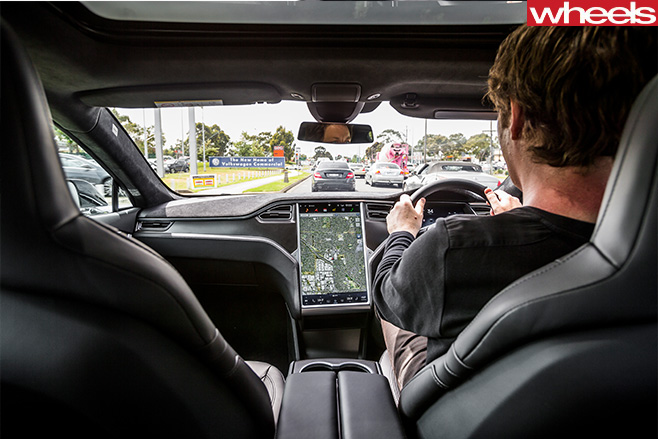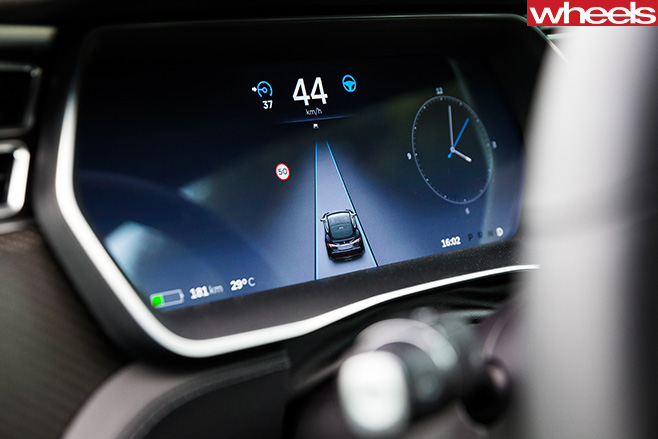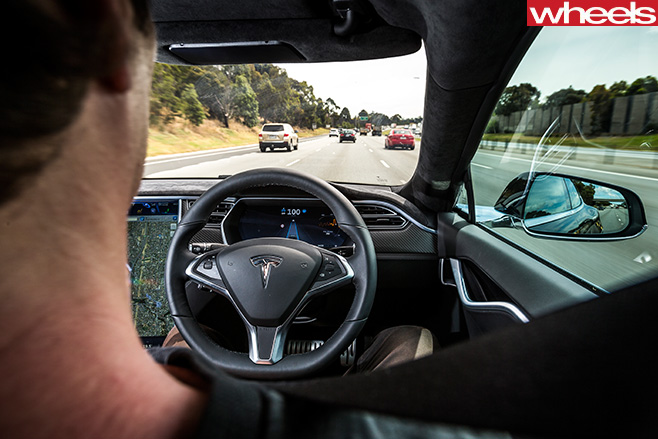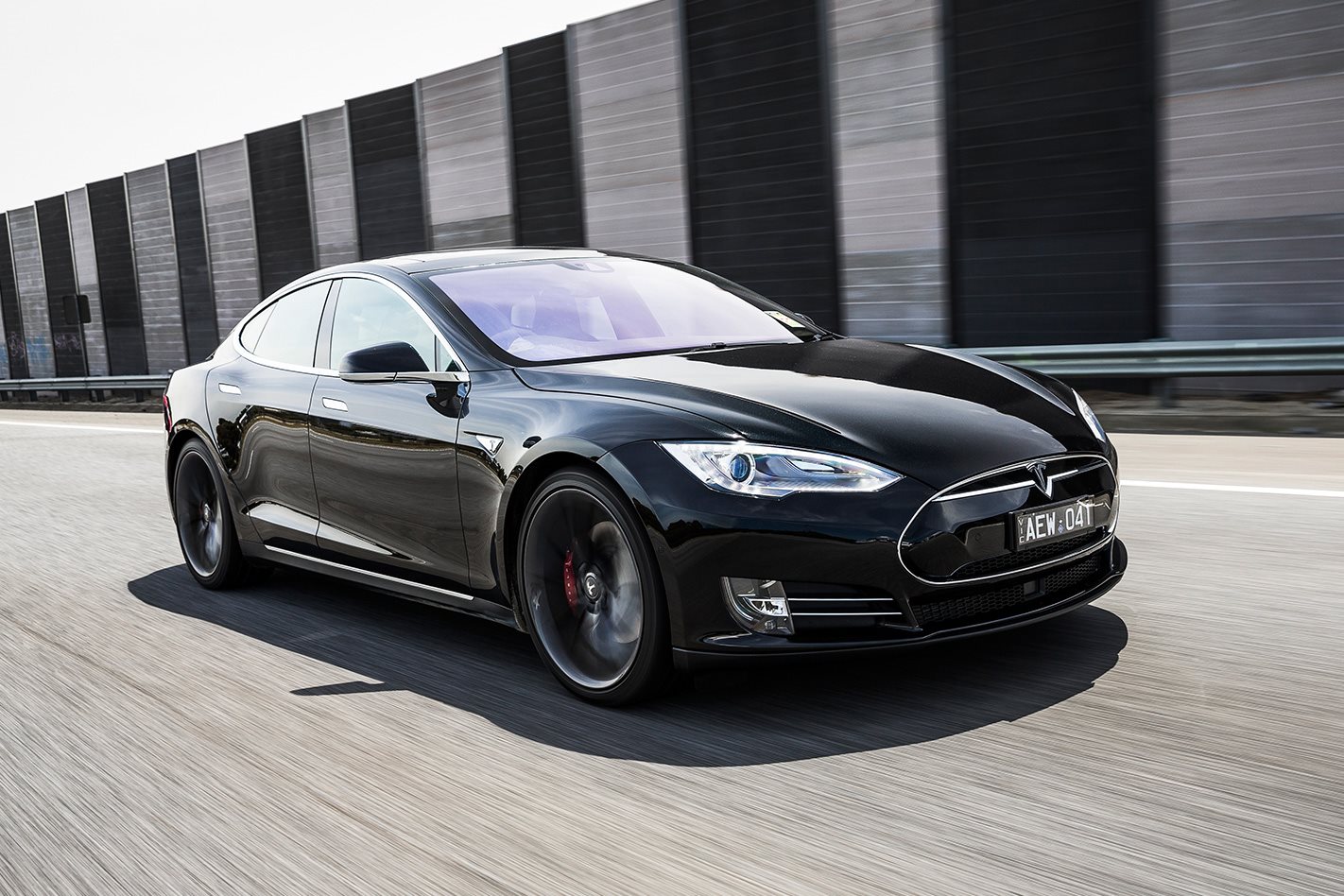The P90D is the quickest Tesla to date, and the latest software updates open the door to Ludicrous mode, Autopilot and self-parking. We get behind the wheel and play beta testers.
WHAT IS IT? The benchmark high-end electric car just became a good deal smarter. The Tesla Model S P90D sees a pair of the company’s most powerful electric motors fizz it to 100km/h in three seconds flat. If that party piece isn’t enough, it will even drive itself, up to a point.
WHY WE’RE TESTING IT We’ve driven earlier versions of the Tesla Model S but the opportunity to guinea-pig the first release of the Autopilot software, and experience the otherworldly acceleration of the P90D’s Ludicrous mode on Aussie roads, was something we just couldn’t pass up.

THE WHEELS VERDICT No production car can astonish quite like the Tesla Model S P90D. For better and for worse, it’s clearly built by a company with no significant heritage in vehicle production. Autopilot and Ludicrous mode together combine to make internal combustion rivals feel utterly antediluvian.
PLUS: Devastating pace, refinement, ease of use, space, gadgetry MINUS: Vast windscreen pillars, feeble headlights, poor interior storage, can get expensive, gadgetry

The steering wheel begins making tiny adjustments of its own accord, the instrument panel draws a lock on the vehicle ahead, and you can take your hands off the wheel and relax. You can, but Tesla doesn’t recommend this, covering itself by claiming you should keep your paws resting on the tiller at all times.
The thing is, Autopilot seems so bloody good that, after a short while, you gain faith. The way it scribes an arc around sweepers without pinballing from left to right within its lane is hugely confidence-inspiring, as is the way the radar cruise control holds station with traffic up the road, the distance driver-selectable.

Autopilot engaged, it’s easy to be lulled into thinking you’re in some omnipotent form of automotive higher intelligence, only to realise that it won’t slow down for revised speed limits or traffic lights. It’s easily flummoxed by the weak link behind the wheel too. With the indicator on the left and the similar (non-detented) column shift on the right, it’s all too easy to accidentally flick it into neutral and find yourself flatlining but going nowhere.

The self-parking system is another jaw-dropper. Unlike most vehicles, which require you to operate the throttle and brakes while they automatically twirl the wheel, the Model S can now perform the whole show, right from identifying a space to shuffling you into it, leaving a scant few millimetres from kerbing those big alloys.
Which brings us to the Ludicrous performance mode, Tesla’s next step after Insane. Bring the twin-engined, all-wheel-drive Model S P90D to a standstill, grip the wheel and stamp the right-hand pedal: it’s that straightforward. The mute violence of what happens next is hard to comprehend. It’s as quick to 100km/h as a McLaren P1.

You do get used to it, though, and begin searching for pole position at the traffic lights. A couple of seconds or so after they turn green, you already have a hundred metres of clear road. Now there’s a contribution to safety we can all get behind.
SPECS Model: Tesla Model S P90D with Ludicrous Engine: Three-phase, four-pole AC induction with copper rotor Battery: 90kWh lithium-ion Max power: 568kW at 0rpm (193kW front motor, 375 kW rear motor) Max torque: 967Nm at 0rpm Transmission: Single speed fixed gear, 9.73:1 reduction ratio Weight: 2127kg 0-100km/h: 3.0sec Range: 480km (NEDC) Price: $215,937 On sale: Now






